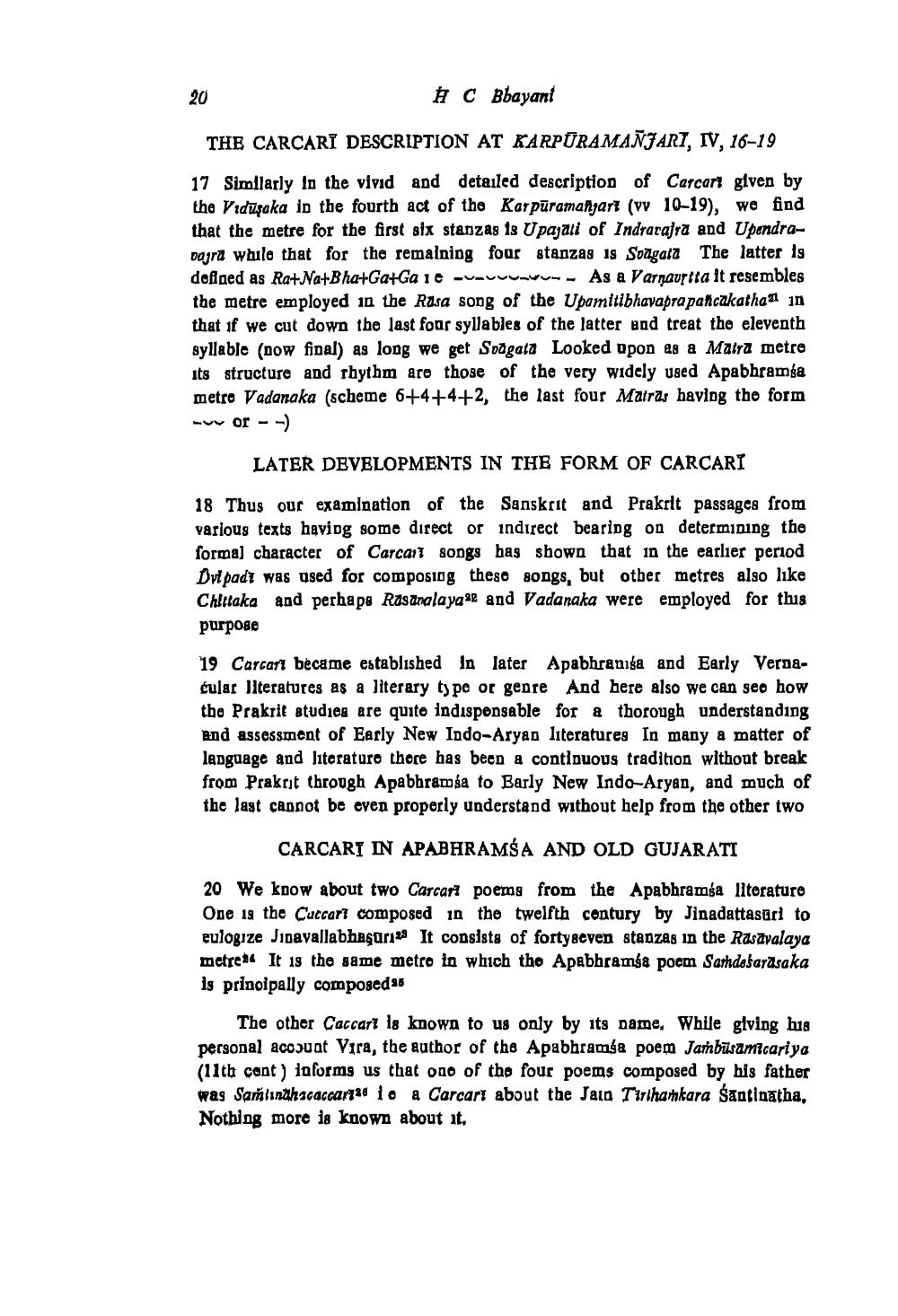________________
C Bbayani
THE CARCARI DESCRIPTION AT KARPURAMANJART, TV, 16-19
17 Simllarly in the vivid and detailed description of Carcart given by the Vidūşaka in the fourth act of the Karpūramaħjart (v 10-19), we find that the metre for the first six stanzas is Upajati of Indrarajra and UpendraDagra while that for the remaining four stanzag is Svagata The latter is defned as Ra+Na+Bha+Ga+Ga 1e --UU-WU-- As a Varnaurtta It resembles the metre employed in the Rosa song of the Upamitibhavaprapancakathaa in that if we cut down the last four syllables of the latter and treat the eleventh syllable (now final) as long we get Soögata Looked upon as a Matra metre its structure and rhythm are those of the very widely used Apabhramsa metro Vadanaka (scheme 6+4+4+2, the last four Matras having the form www or -->
LATER DEVELOPMENTS IN THE FORM OF CARCARI
18 Thus our examination of the Sanskrit and Prakrit passages from various texts having some direct or indirect bearing on determining the formal character of Carcait songs has shown that in the earlier period Dvi padt was used for composing theso songs, but other metres also like Chittaka and perhaps Rasznalayas2 and Vadanaka were employed for this рurрове
19 Carcart became established in later Apabhranısa and Early Vernacular literatures as a literary type or genre And here also we can seo how the Prakrit studies are quite indispensable for a thorough understanding end assessment of Early New Indo-Aryan literatures In many a matter of language and literaturo thore has been a continuous tradition without break from Prakrit through Apabhramsa to Early New Indo-Aryan, and much of the last cannot be even properly understand without help from the other two
CARCARI IN APABHRAMŚA AND OLD GUJARATI
20 We know about two Carcar poems from the Apabbramsa literature One 19 the Cuccart composed in the twelfth century by Jinadattasuri to eulogize Jinavallabhagar123 It consists of fortyseven stanzas in the Rasavalaya metre. It is the same metro to which the Apabhramsa pocm Sathdasarāsaka is principally composed 16
The other Caccart is known to us only by its name. While giving his personal acoɔuat Vira, the author of the Apabhramsa poem Jambūsamicariya (11th cent) loforms us that ono of the four poems composed by his father was Sarlinahacaccanto io a Carcari about the Jain Tihankara santinatha, Nothing more is known about it,




